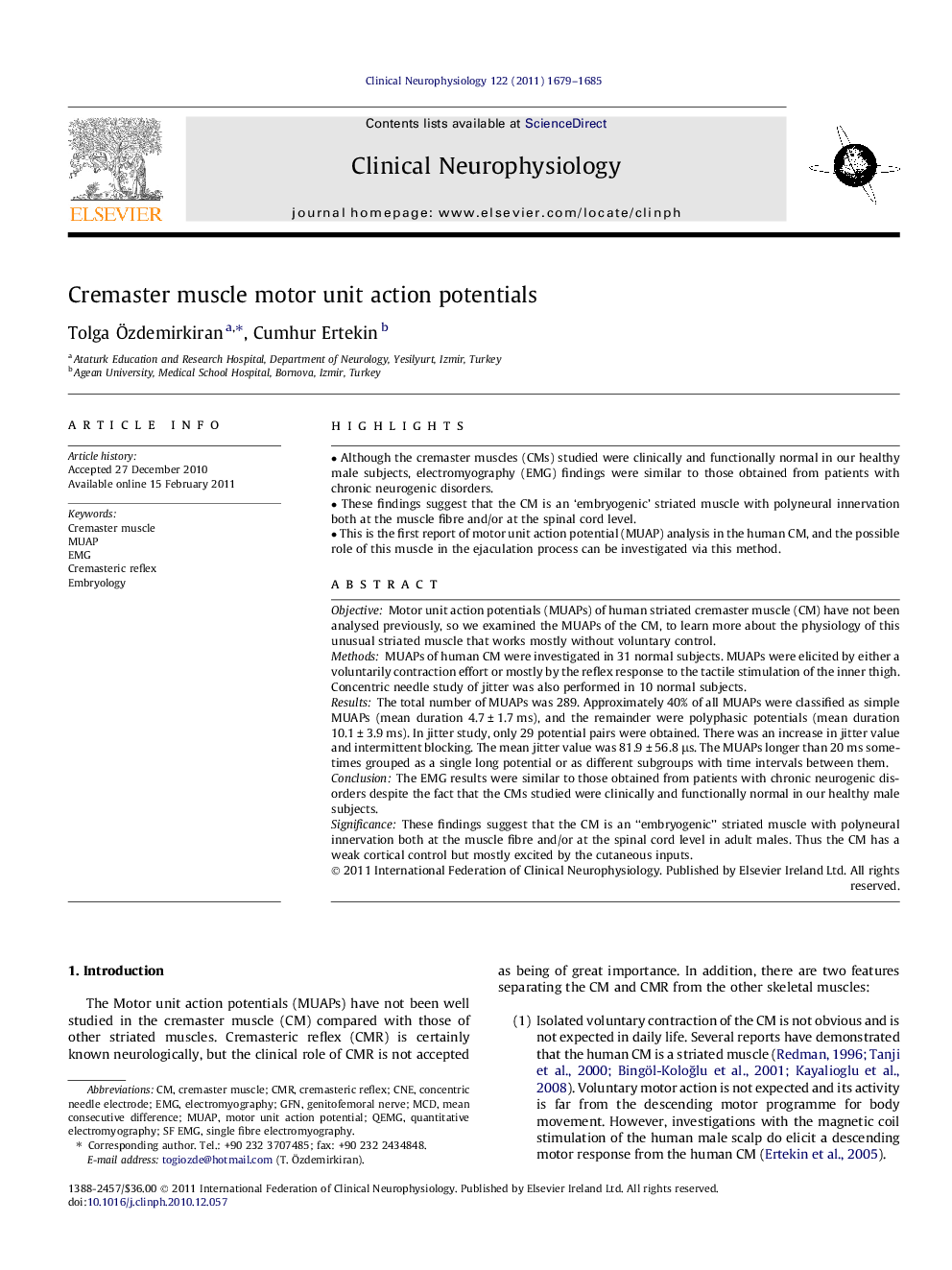| Article ID | Journal | Published Year | Pages | File Type |
|---|---|---|---|---|
| 3044035 | Clinical Neurophysiology | 2011 | 7 Pages |
ObjectiveMotor unit action potentials (MUAPs) of human striated cremaster muscle (CM) have not been analysed previously, so we examined the MUAPs of the CM, to learn more about the physiology of this unusual striated muscle that works mostly without voluntary control.MethodsMUAPs of human CM were investigated in 31 normal subjects. MUAPs were elicited by either a voluntarily contraction effort or mostly by the reflex response to the tactile stimulation of the inner thigh. Concentric needle study of jitter was also performed in 10 normal subjects.ResultsThe total number of MUAPs was 289. Approximately 40% of all MUAPs were classified as simple MUAPs (mean duration 4.7 ± 1.7 ms), and the remainder were polyphasic potentials (mean duration 10.1 ± 3.9 ms). In jitter study, only 29 potential pairs were obtained. There was an increase in jitter value and intermittent blocking. The mean jitter value was 81.9 ± 56.8 μs. The MUAPs longer than 20 ms sometimes grouped as a single long potential or as different subgroups with time intervals between them.ConclusionThe EMG results were similar to those obtained from patients with chronic neurogenic disorders despite the fact that the CMs studied were clinically and functionally normal in our healthy male subjects.SignificanceThese findings suggest that the CM is an “embryogenic” striated muscle with polyneural innervation both at the muscle fibre and/or at the spinal cord level in adult males. Thus the CM has a weak cortical control but mostly excited by the cutaneous inputs.
► Although the cremaster muscles (CMs) studied were clinically and functionally normal in our healthy male subjects, electromyography (EMG) findings were similar to those obtained from patients with chronic neurogenic disorders. ► These findings suggest that the CM is an ‘embryogenic’ striated muscle with polyneural innervation both at the muscle fibre and/or at the spinal cord level. ► This is the first report of motor unit action potential (MUAP) analysis in the human CM, and the possible role of this muscle in the ejaculation process can be investigated via this method.
